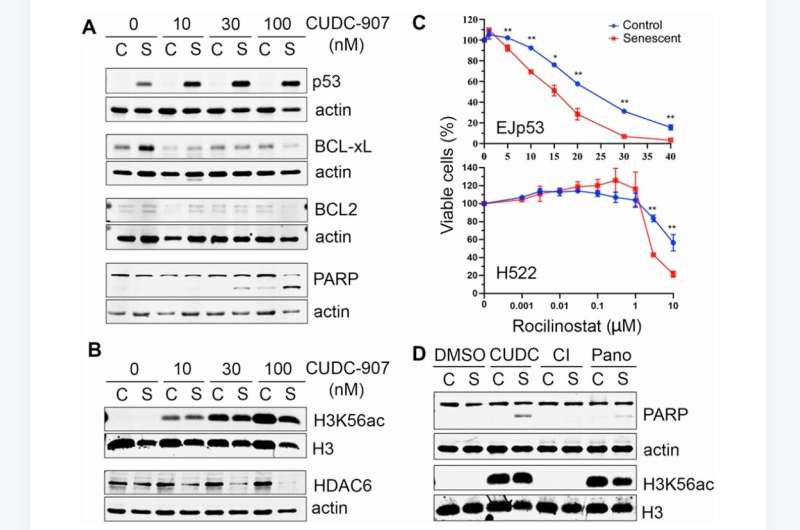This article has been reviewed according to Science X's editorial process and policies. Editors have highlighted the following attributes while ensuring the content's credibility:
fact-checked
proofread
Characterization of the HDAC/PI3K inhibitor CUDC-907 as a novel senolytic

A new research paper was published in Aging, titled "Characterization of the HDAC/PI3K inhibitor CUDC-907 as a novel senolytic."
The accumulation of senescent cells has an important role in the phenotypical changes observed in aging and in many age-related pathologies. Thus, the strategies designed to prevent these effects, collectively known as senotherapies, have a strong clinical potential.
Senolytics are a type of senotherapy aimed at specifically eliminating senescent cells from tissues. Several small molecule compounds with senolytic properties have already been identified, but their specificity and range of action are variable. Because of this, potential novel senolytics are being actively investigated.
Given the involvement of HDACs and the PI3K pathway in senescence, researchers Fares Al-Mansour, Abdullah Alraddadi, Buwei He, Anes Saleh, Marta Poblocka, Wael Alzahrani, Shaun Cowley, and Salvador Macip from the University of Leicester, Najran University and Universitat Oberta de Catalunya hypothesized that the dual inhibitor CUDC-907, a drug already in clinical trials for its antineoplastic effects, could have senolytic effects.
"Here, we show that CUDC-907 was indeed able to selectively induce apoptosis in cells driven to senesce by p53 expression, but not when senescence happened in the absence of p53," write the researchers.
Consistent with this, CUDC-907 showed senolytic properties in different models of stress-induced senescence. Their results also indicate that the senolytic functions of CUDC-907 depend on the inhibitory effects of both HDACs and PI3K, which leads to an increase in p53 and a reduction in BH3 pro-survival proteins. Taken together, their results show that CUDC-907 has the potential to be a clinically relevant senolytic in pathological conditions in which stress-induced senescence is involved.
The researchers conclude, "According to our results, CUDC-907 could be an interesting drug to be used as a senolytic, alone or as part of a targeted approach."
More information: Fares Al-Mansour et al, Characterization of the HDAC/PI3K inhibitor CUDC-907 as a novel senolytic, Aging (2023). DOI: 10.18632/aging.204616





















